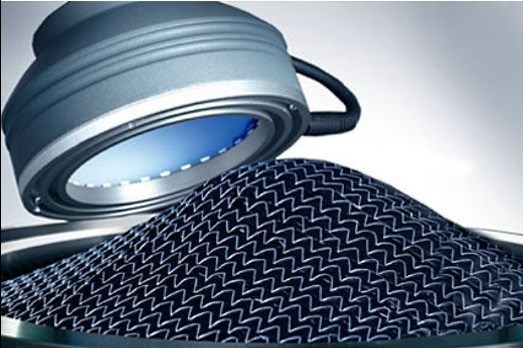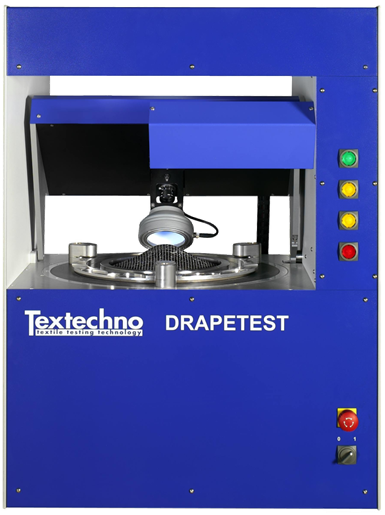ISO standard launched to quantify drapability and deformability of fabrics and nonwovens
ISO 21765 allows worldwide comparable measurement of various parameters, which can be measured on Textechno’s DRAPETEST instrument.
Share

DRAPETEST while performing a measurement on a non-crimp fabric.
Photo Credit: AMAC GmbH
A newly developed international standard for quantifying material behavior in terms of drapability and deformability was recently published by ISO as ISO 21765:2020, according to precision testing equipment supplier Textechno (Mönchengladbach, Germany) and non-crimp fabrics (NCF) supplier Saertex (Saerbeck, Germany, and Huntersville, N.C., U.S.).
According to the partners, the new standard ISO 21765 allows the worldwide comparable measurement of all relevant parameters regarding the deformability and drapability of all kinds of fabrics, including woven fabrics and NCFs as well as knitted fabrics and nonwovens on Textechno’s precision testing equipment DRAPETEST. This shows potential for recycled carbon fiber nonwovens.

DRAPETEST is reported to be the first testing instrument worldwide to quantify not only the force which is required for deforming a fabric, but also the various defects such as gaps, undulation, or wrinkles which can arise due to the deformation.
Along with partners such as Saertex, Textechno developed DRAPETEST in a publicly funded project that began in 2011.
Dietmar Möcke, CTO at Saertex, says, “With ISO 21765, we finally have a standardized testing method with worldwide validity. It allows us to provide our customers with comparable and reproducible measurement values regarding the draping characteristics of our products.”
Ulrich Mörschel, managing director of Textechno, adds, “We are grateful for the support from all around the world allowing us to establish the new ISO standard. The standard finally fills a gap in the testing methods for fabrics both in the fields of textiles and composites.”
Dr. Michael Effing, managing director of AMAC GmbH and Senior Advisor to Textechno, says, “A lot of research is dedicated to new production technologies of composites, non-crimp fabrics and classical fabrics for thermosets have with 33 % a significant market share in the production of all composite materials. The application of the new standard for nonwovens from recycled carbon fibers comes perfectly on time for this market sector which will gain more and more importance within the next years.”
Related Content
-
The basics of composite drawing interpretation
Knowing the fundamentals for reading drawings — including master ply tables, ply definition diagrams and more — lays a foundation for proper composite design evaluation.
-
ASCEND program update: Designing next-gen, high-rate auto and aerospace composites
GKN Aerospace, McLaren Automotive and U.K.-based partners share goals and progress aiming at high-rate, Industry 4.0-enabled, sustainable materials and processes.
-
Carbon fiber, bionic design achieve peak performance in race-ready production vehicle
Porsche worked with Action Composites to design and manufacture an innovative carbon fiber safety cage option to lightweight one of its series race vehicles, built in a one-shot compression molding process.

.jpg;width=70;height=70;mode=crop)














